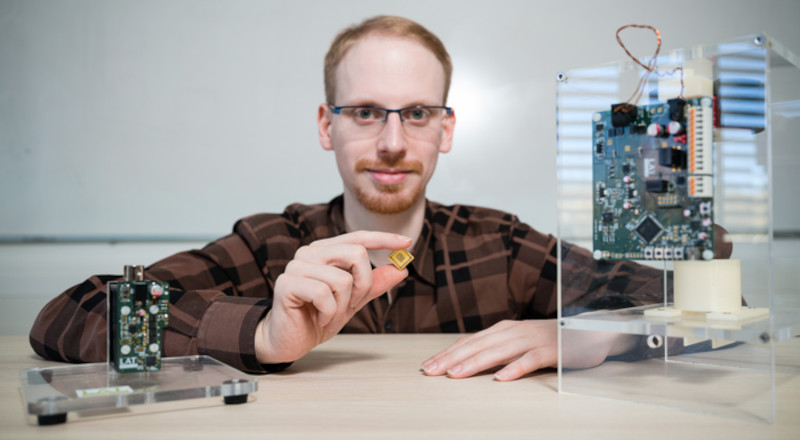
Saarland University technology provides fine control of solenoid valves
By DE Staff
Motion Control Machine BuildingGerman research team’s low-energy system allows variable piston position and actuation speed without sensors.

Saarland University doctoral student, Niklas König, researches technology that controls valves and locking devices without the need for additional sensors.
(Photo credit: Oliver Dietze/Saarland University)
Researchers at Germany’s Saarland University announced the development of solenoid valve technology that allows for a high level of flow control but without requiring expensive sensors and with little energy input. While solenoid valves are fast, reliable and widely used, they are typically either fully open or abruptly shut. Making them hold a position, or precisely refine their operation, requires continuous energy input or a complicated series of sensors and control system.
To get around these limitations, the valve technology developed by the Saarland University group, headed by by Professor Matthias Nienhaus, employs a magnetically conductive metal pin in a coil of wound copper wire and a small microchip within the drive electronics. By evaluating the current that flows through the coil to move the valve piston, the researchers say they can detect the position of the piston and control it quickly and accurately.
“We monitor the inductance,” explains doctoral student Niklas König, who is researching this process as part of his doctoral thesis with Matthias Nienhaus. “We analyze the flow of the current in the winding over time. What that means is that we measure voltage and current, look at fluctuations over a certain period of time, analyze them and use them to observe the magnetic state.”
The magnetic state, and thus the current fluctuations, change depending on where the piston is at any given time, König adds. ‘This enables us to know precisely where the piston is. Using this information, we can control the position of the pin efficiently and precisely.”
The result, he says, is that the continuously adjustable piston can move back and forth slowly or quickly as required, can hold any position and can return softly to its stop position if desired. In addition, the researchers say their algorithms allow for different piston positions to be programmed or to monitor whether a specific position is maintained, for example whether the valve is actually closed.
The research team is scheduled to demonstrate their patented technology at Hannover Messe 2023, (April 17 – 21, 2023) by controlling a floating steel ball that floats up and down on command using only current control signals and no additional sensors.
The group’s research was funded by the German Ministry for Economic Affairs and Climate Action (BMWK). The microchip was developed in collaboration with the Fraunhofer Institute for Microelectronic Circuits and Systems (IMS) in Duisburg.
www.uni-saarland.de/en/
